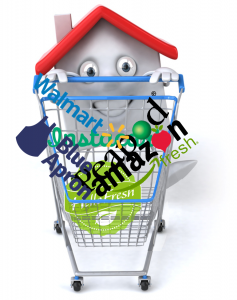Web 2.0 has also been called the Social Web because it offers more than information; it offers a new level of connectivity. The Financial Times reports that traditional media outlets (in this case print magazines) are finally learning to use Web 2.0 to enhance their online products, making them more attractive for both readers and advertisers [“Click and drag your way to that ideal sink,” by Alan Mitchell, 11 April 2007]. Mitchell begins his article with a hypothetical situation:
“You see a picture of a beautiful bathroom in a home-decorating magazine and think ‘I just love that sink.’ So you go to the magazine’s website, click on the picture, and it immediately displays all the product’s details – manufacturer, price, size, specifications and so on. ‘Whoa! I didn’t think it would be that expensive,’ you mutter. Luckily, many similar products are also displayed next to this particular item, so it is easy to compare features and prices. Another click takes you through to a local vendor where you can make your purchase.”
This is a hypothetical situation because, Mitchell reports, it isn’t possible for online magazines to offer such services right now.
“For many shoppers, a service that combines the benefits of the specialist magazine’s expert advice with the price information of comparison websites may seem ideal. But it has not yet materialised, thanks to the enormous behind-the-scenes difficulties of delivering it. The biggest hurdle is the need for an up-to-date, comprehensive database of every product on the market, which factors in data-sharing and commercial agreements with the full range of relevant suppliers. Such a service also needs to connect this data to retailers’ and dealers’ inventories, and handle the financial logistics of a leads-referral business. And it needs to make the whole process simple and easy to use for consumers.”
I realize I’m stating the obvious, but companies advertise to sell products. As anyone who has been annoyed by (and has ignored) pop-up ads on their computer understands, there is a big chasm between offer and sale. Mitchell explains how publishers are trying to close this gap:
“These are some of the reasons why, even as they embrace the internet, magazine publishers have stayed focused on their traditional strengths of editorial content and display advertising. Now, though, Meredith Corporation, publisher of consumer magazines such as Better Homes and Gardens, Family Circle and Home Journal in the US, is crossing the line between editorial content and closing sales by making comparison shopping a central part of its online service. … On bhg.com’s home makeover service, which was launched this month and will be fully up and running later this year, consumers will be able to research products online and tag their findings for future reference. They will have access to online ‘home remodelling’ planning and ‘envisioning’ tools where they can drag and drop pictures of products into three-dimensional mock-ups of their rooms. They will also be able to view large databanks of pictures of bathrooms, kitchens and gardens, clicking on particular items within these pictures to connect seamlessly to the comparison shopping service. To achieve this, bhg.com staff are now mapping the site’s image bank of 15,000 photographs of kitchens, bathrooms and outside spaces to the Edgenet database, which is used by Home Depot, the US home-improvement retailer, and its suppliers among others. Mr Hickey claims he is delivering ‘a holy grail’ to both consumers and manufacturers by combining editorial content with comparison shopping. Consumers gain the ability to move ‘from inspiration to transaction,’ supported by the right sort of information every step of the way. Manufacturers, meanwhile, have an opportunity to connect with consumers at each step of the journey from initial idea to the point where purchasing decisions are made.”
Mitchell calls this development nothing short of a “new business model.”
“The result is a new online business model that both strengthens traditional display advertising while tapping into fast-growing revenue streams elsewhere: search-advertising and sales commissions from referrals.”
Mitchell notes that achieving this, let alone more advanced objectives, will not be easy.
“Many of the more sophisticated services – such as ‘drag-and-drop’ – are still in development. An auction system that allows manufacturers to bid for product placements may undermine consumers’ trust in the brand’s editorial values. The limited number of participating retailers – restricted to industry giants such as Home Depot and Lowe’s – means price comparisons are not yet comprehensive. There is a question mark, too, over how much synergy there will be between print and online. The print version of Better Homes and Gardens has 7.6m readers, but only about one-third of the website’s users are magazine readers or subscribers. The model could also falter if shoppers simply take advantage of the information provided by bhg.com but then shop separately, thereby denying it revenues from retailers for referring the lead.”
Despite the challenges, this effort represents a mature use of Web 2.0 for businesses (beyond social networking). It draws on the strengths of both traditional print media and e-commerce comparison sites. Such intersections of ideas often provide blended ideas that result in powerful innovations. We’ll wait and see if this one takes off.




